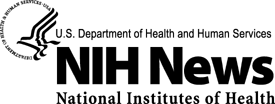Thursday, May 20, 2010
National Institutes of Health-Sponsored Workshop Provides Guidelines for Soy Research
Participants in a workshop sponsored by the National Institutes of Health have developed guidelines on designing and evaluating clinical research studies investigating soy, representing the first guidelines of their kind in the field of soy research. The guidelines are published in the June 2010 issue of The Journal of Nutrition.
These innovative guidelines are an important tool for increasing the consistency of study design and validity of outcomes in future clinical research on soy. NIH has supported research on soy in its many forms for a variety of outcomes.
The workshop, Soy Protein/Isoflavone Research: Challenges in Designing and Evaluating Intervention Studies, was supported by six NIH components. They include: Office of Dietary Supplements (ODS), National Center for Complementary and Alternative Medicine (NCCAM), National Cancer Institute, National Institute of Arthritis and Musculoskeletal and Skin Diseases, National Institute on Aging, and the NIH Division of Nutrition Research Coordination.
Past results of clinical studies on soy have been inconsistent and difficult to compare, which could be attributed to a number of factors, including varying product composition and dosing, study adherence, and sample size. The new guidelines are intended to improve the quality of future research studies of soy.
"NIH looks forward to the application of these guidelines," said Paul Coates, Ph.D., director of ODS. "We expect that variability in study results will be reduced and confidence in results will increase, thereby providing answers to users of soy products."
The soy research guidelines address:
- The need for sound justification for studying the health effects of soy in humans
- Approaches to understanding and ensuring product composition and integrity
- Methods for assessing exposure to non-study soy and intervention adherence
- Some appropriate analytical methods to test soy products
- The importance of understanding how soy is processed and how it acts in the body
- The role that genetic make-up may play in the health effects of soy.
"As with any clinical research, it is important to design studies so that results about the product or therapy being studied can be confirmed," said Josephine P. Briggs, M.D., director of NCCAM. "The soy research guidelines are an excellent example of NIH’s proactive approach and commitment to scientific rigor."
While the guidelines are not requirements, investigators, journal editors, study sponsors, and protocol reviewers may consider these guidelines for a variety of purposes, including study design and implementation, reporting results, and interpretation of published studies.
The National Cancer Institute leads the National Cancer Program and the NIH effort to dramatically reduce the burden of cancer and improve the lives of cancer patients and their families, through research into prevention and cancer biology, the development of new interventions, and the training and mentoring of new researchers. More information about cancer, screening, and prevention is available on the NCI Web site at http://www.cancer.gov or from NCI's Cancer Information Service at 1-800-4-CANCER (1-800-422-6237).
The mission of the National Institute of Arthritis and Musculoskeletal and Skin Diseases (NIAMS) is to support research into the causes, treatment, and prevention of arthritis and musculoskeletal and skin diseases; the training of basic and clinical scientists to carry out this research; and the dissemination of information on research progress in these diseases. For more information about NIAMS, call the information clearinghouse at (301) 495-4484 or (877) 22-NIAMS (free call) or visit the NIAMS Web site at http://www.niams.nih.gov.
The National Institute on Aging leads the federal effort supporting and conducting research on aging and the medical, social and behavioral issues of older people. For more information on research and aging, go to http://www.nia.nih.gov.
The mission of the Division of Nutrition Research Coordination (DNRC) is to coordinate Nutritional Sciences-related research and research training across the National Institutes of Health (NIH) and among Federal Agencies by providing mechanisms to communicate research, research training, policy, and education initiatives. For additional information about DNRC, visit http://dnrc.nih.gov/.
The mission of the NIH Office of Dietary Supplements (ODS) is to strengthen knowledge and understanding of dietary supplements by evaluating scientific information, stimulating and supporting research, disseminating research results, and educating the public to foster an enhanced quality of life and health for the U.S. population. For additional information about ODS, visit ods.od.nih.gov.
The National Center for Complementary and Alternative Medicine's mission is to explore complementary and alternative medical practices in the context of rigorous science, train complementary and alternative medicine researchers, and disseminate authoritative information to the public and professionals. For additional information, call NCCAM’s Clearinghouse toll free at 1-888-644-6226, or visit the NCCAM Web site at nccam.nih.gov.
About the National Institutes of Health (NIH): NIH, the nation's medical research agency, includes 27 Institutes and Centers and is a component of the U.S. Department of Health and Human Services. NIH is the primary federal agency conducting and supporting basic, clinical, and translational medical research, and is investigating the causes, treatments, and cures for both common and rare diseases. For more information about NIH and its programs, visit www.nih.gov.
NIH...Turning Discovery Into Health ®
Reference:
Klein MA, Nahin RL, Messina MJ, et al. Guidance from an NIH Workshop on Designing, Implementing, and Reporting Clinical Studies of Soy Interventions. The Journal of Nutrition. 2010; 140(suppl):1192S-1204S.
###

